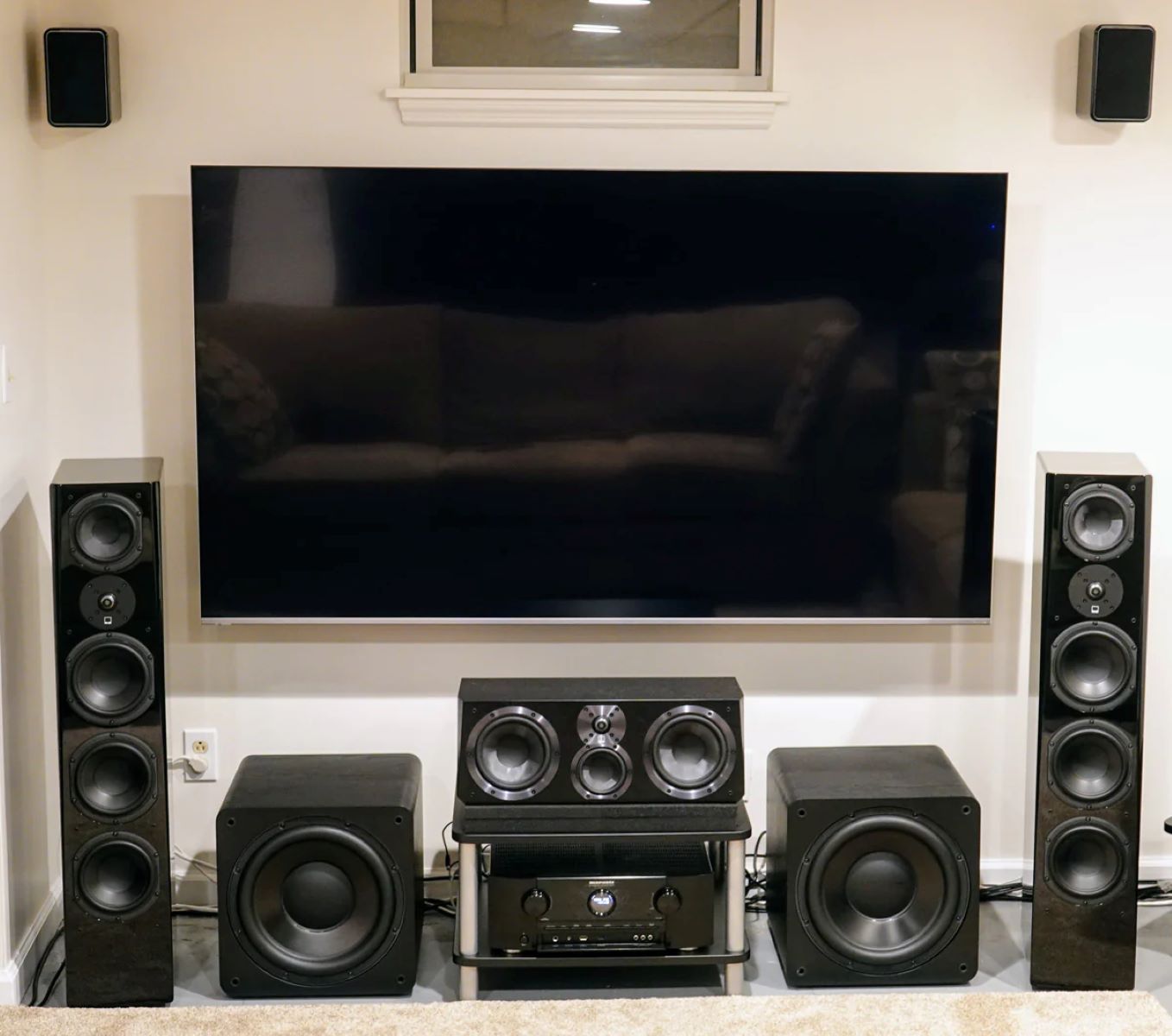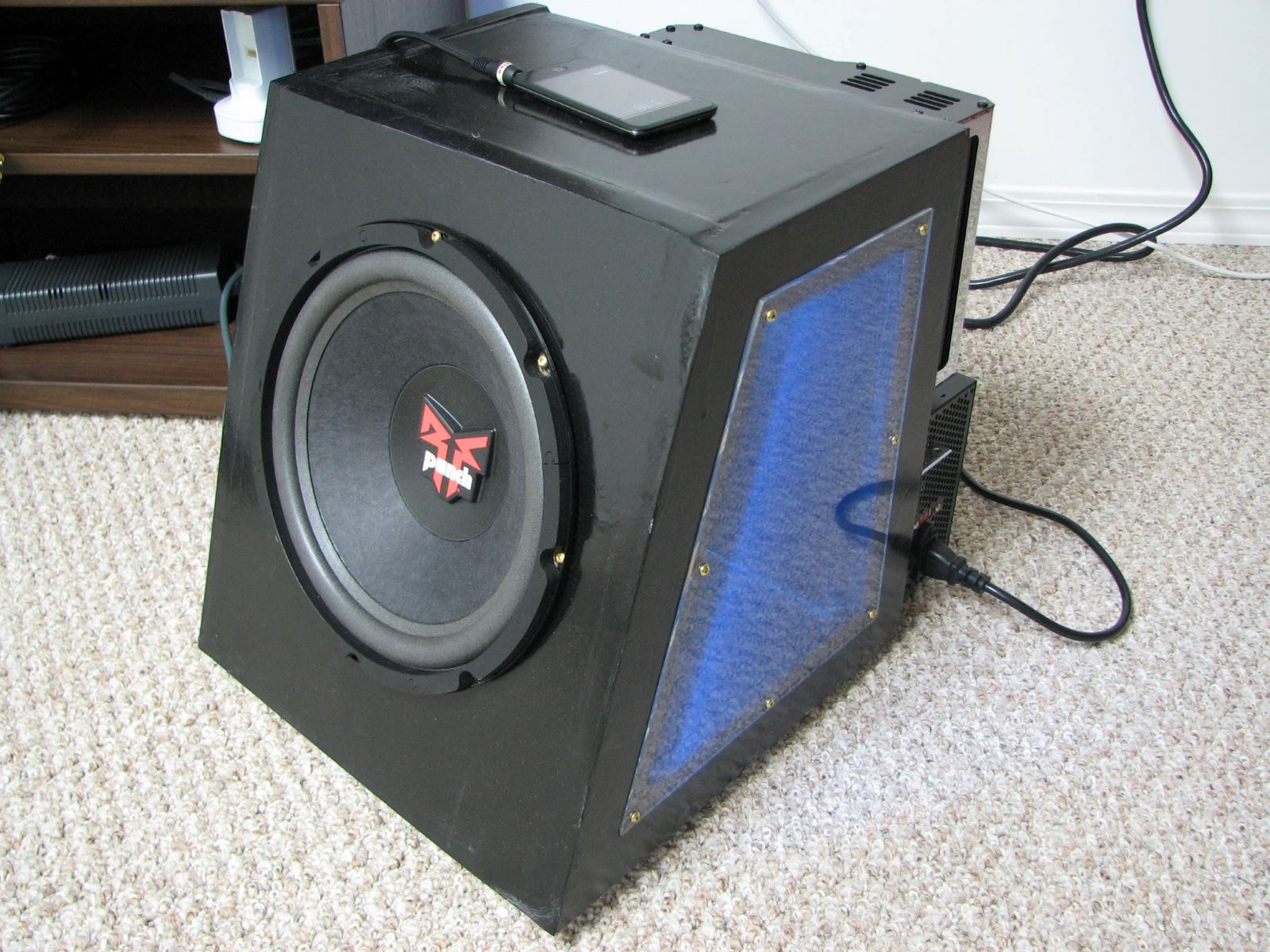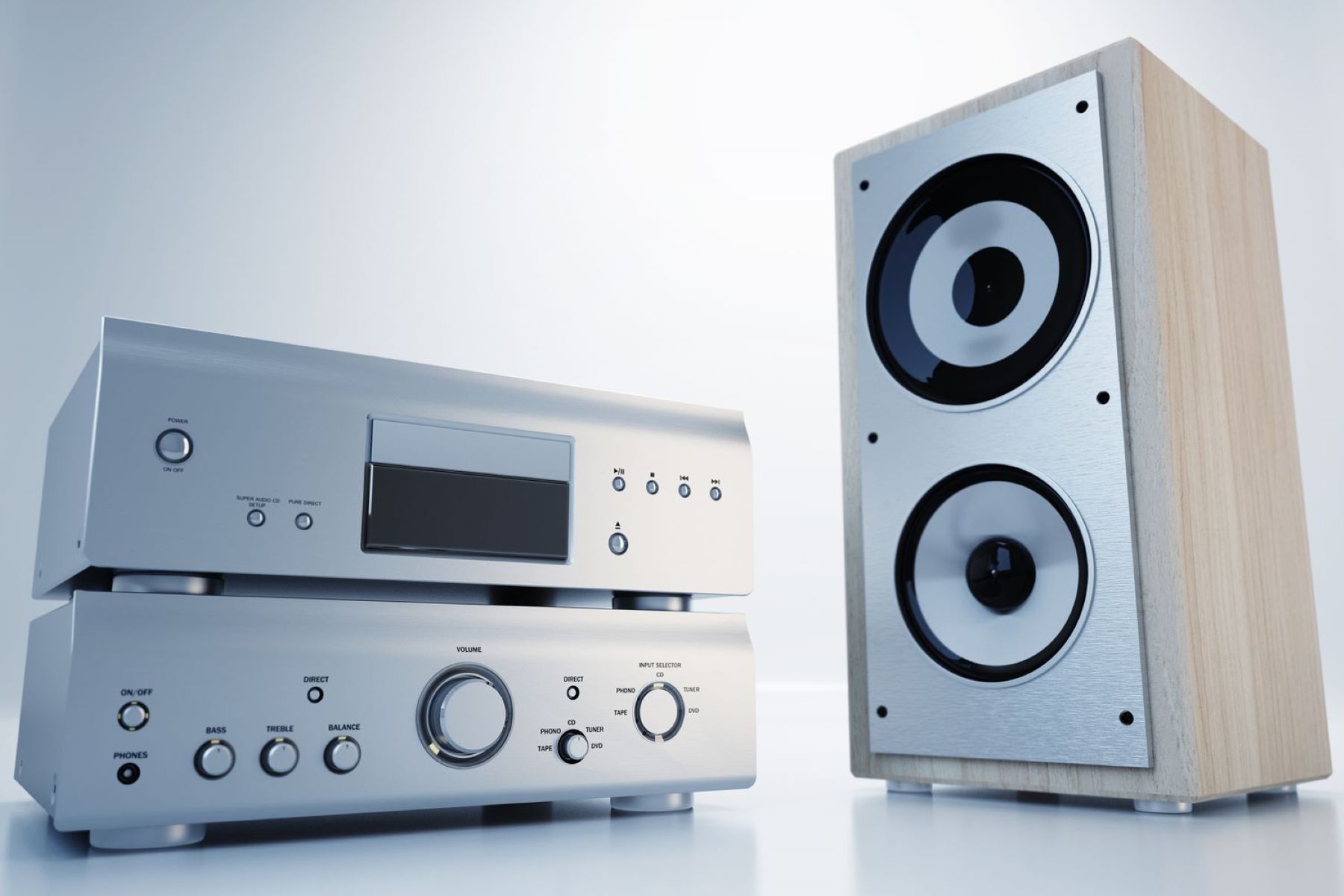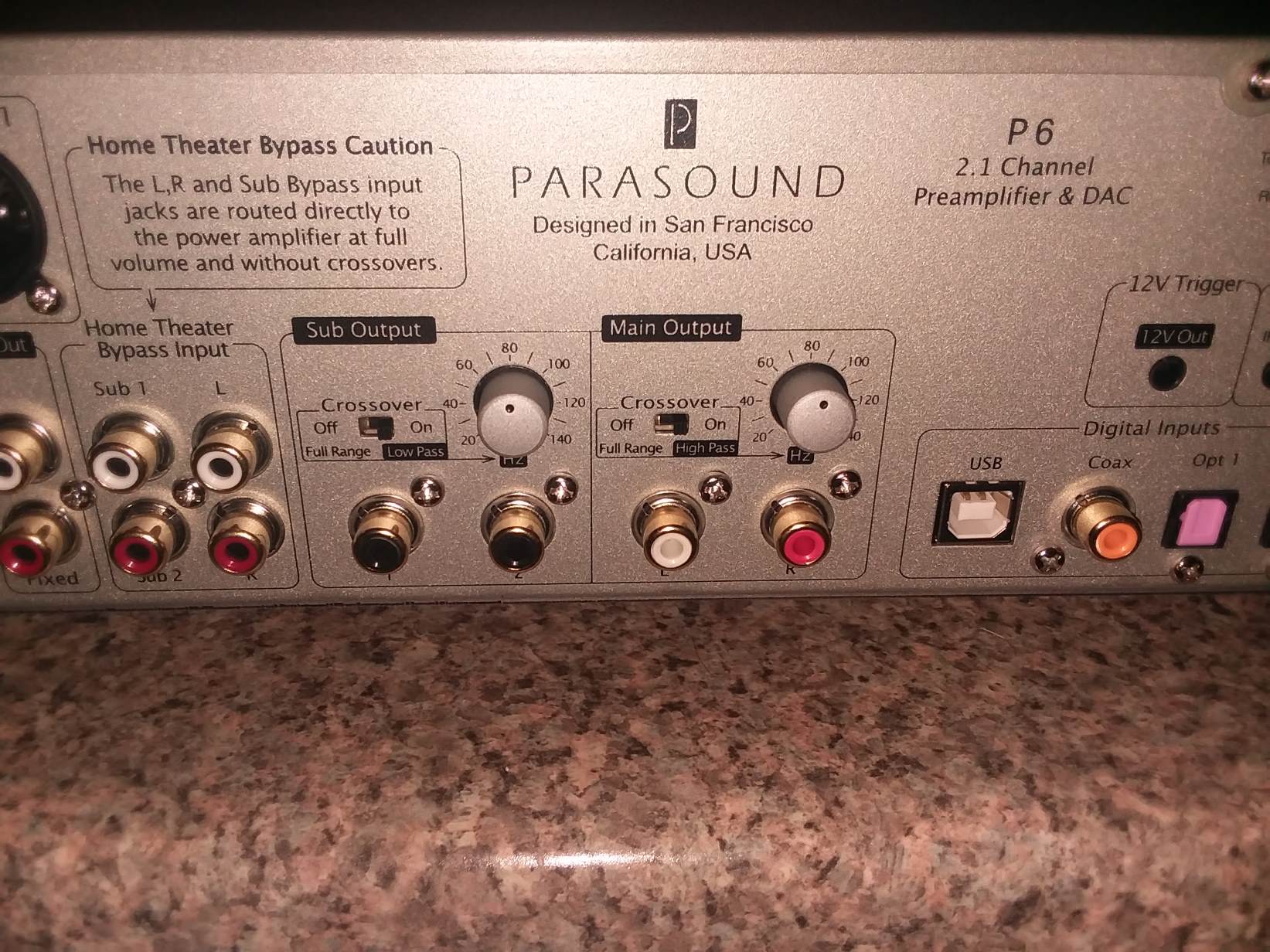Home>Devices & Equipment>Subwoofer>Where To Place A Subwoofer In Home Theater


Subwoofer
Where To Place A Subwoofer In Home Theater
Modified: February 18, 2024
Looking for the perfect spot to position your subwoofer in your home theater? Learn the best placement techniques for optimal bass performance.
(Many of the links in this article redirect to a specific reviewed product. Your purchase of these products through affiliate links helps to generate commission for AudioLover.com, at no extra cost. Learn more)
Table of Contents
Introduction
When it comes to creating an immersive home theater experience, a subwoofer plays a vital role in delivering deep, powerful bass that enhances the impact of explosions, rumbling thunder, and other low-frequency sound effects. However, simply purchasing a high-quality subwoofer is not enough to achieve optimal performance. Proper subwoofer placement is essential for achieving the best possible bass response, balance, and overall audio quality in your home theater.
While it can be tempting to place a subwoofer wherever it fits in your room, this can lead to subpar audio performance and an unbalanced soundstage. To truly appreciate the full potential of your subwoofer, it is important to consider several factors and strategic placement options, so that you can enjoy a seamless integration of the subwoofer with your other speakers.
In this article, we will explore the importance of subwoofer placement, discuss the factors to consider before deciding where to place your subwoofer, and explore some ideal subwoofer placement options for your home theater setup. Additionally, we will highlight common mistakes to avoid when positioning your subwoofer to ensure you get the most out of your audio system.
By the end of this article, you will have a solid understanding of the importance of subwoofer placement and be equipped with the knowledge to position your subwoofer effectively for a truly immersive home theater experience.
Importance of Subwoofer Placement
The placement of your subwoofer can greatly impact the overall sound quality and performance of your home theater system. Here are a few reasons why subwoofer placement is so important:
1. Balanced Sound: Proper subwoofer placement ensures that low-frequency sounds blend seamlessly with the rest of your audio system, creating a well-balanced and immersive listening experience. When positioned correctly, the subwoofer complements the main speakers, enhancing the depth and impact of low-frequency effects.
2. Minimize Acoustic Distortions: Placing the subwoofer in an optimal location helps minimize acoustic distortions caused by room resonances and standing waves. These distortions can lead to uneven bass response and muddiness in the sound. By positioning the subwoofer correctly, you can mitigate these issues and achieve a cleaner, more accurate bass reproduction.
3. Enhance Bass Performance: Subwoofers rely on the interaction between the speaker and the surrounding space to produce low frequencies. The placement of the subwoofer can significantly impact its ability to deliver deep and impactful bass. By finding the optimal position, you can maximize the subwoofer’s performance, delivering powerful bass that fills the room.
4. Eliminate Localization: Ideally, the subwoofer should integrate seamlessly with the main speakers, creating a cohesive soundstage. If the subwoofer is placed in a location that easily identifies it as the source of the bass, it can disrupt the immersive experience. Proper placement helps eliminate localization, allowing the bass to appear to come from the main speakers rather than a separate source.
5. Avoid Interference: Placing the subwoofer in the wrong position can cause interference with other objects or surfaces in the room. This interference can result in unwanted vibrations, rattling, or boomy bass. By selecting an appropriate placement, you can minimize these issues and enjoy a cleaner, distortion-free bass response.
Considering the importance of subwoofer placement, it is crucial to carefully assess your room’s acoustics, size, and layout before making a decision. This will ensure that you can optimize the performance of your subwoofer and achieve the best possible audio experience in your home theater.
Factors to Consider Before Placing a Subwoofer
Before settling on a specific placement for your subwoofer, it’s important to consider several factors that can greatly impact its performance. Here are a few key factors to keep in mind:
1. Room Acoustics: The acoustics of your room play a significant role in how your subwoofer interacts with the space. Factors such as room size, shape, and construction materials can affect bass response and overall sound quality. A smaller room with hard surfaces may result in stronger bass reflections, while a larger room with carpeting and soft furnishings may absorb some of the bass. Understanding your room’s acoustics will help you choose the best placement for optimal sound.
2. Listening Position: Consider the location of your primary listening position or seating area. The subwoofer should be positioned in a way that provides an even bass response throughout the room, ensuring that everyone can enjoy the full impact of low-frequency effects. Take into account the distance between the subwoofer and the listening position to achieve balanced and well-integrated bass.
3. Speaker Setup and Configuration: The placement of your main speakers can influence how and where you position the subwoofer. It’s important to have a well-configured speaker setup with proper positioning and calibration before finalizing the subwoofer placement. This will help ensure that the subwoofer seamlessly integrates with the rest of your audio system and delivers consistent and accurate bass response.
4. Room Layout and Obstacles: Consider the layout of your room and any potential obstacles that may affect subwoofer placement. Furniture, walls, and other objects can interact with bass frequencies, causing reflections, obstructions, or standing waves. Take into account the room’s layout and try to position the subwoofer in a way that minimizes these obstacles for optimal bass performance.
5. Personal Preference: While there are general guidelines for subwoofer placement, personal preference also plays a role. Different listening preferences, room aesthetics, and practical considerations may influence where you ultimately choose to place your subwoofer. Experimentation and fine-tuning may be necessary to find the best placement that suits your specific preferences and requirements.
By considering these factors, you can make an informed decision about the placement of your subwoofer, ensuring that it performs at its best and delivers a satisfying low-frequency experience in your home theater.
Ideal Subwoofer Placement Options
When it comes to subwoofer placement, there are several options to consider based on your room layout and personal preferences. Here are some ideal subwoofer placement options to help you enhance the bass performance in your home theater:
- Front of the Room: Placing the subwoofer at the front of the room, between or on either side of the main speakers, is a popular choice. This placement helps create a cohesive soundstage, with the bass appearing to come from the direction of the main speakers. It also allows for a balanced and even distribution of bass throughout the room.
- Side of the Room: Another option is to position the subwoofer along one of the side walls of the room. This can be an effective placement if your room layout or furniture arrangement limits the options for front placement. Make sure to experiment with different positions along the side wall to find the optimal spot for balanced bass response.
- Back of the Room: Placing the subwoofer at the back of the room can be a viable option, especially if you have a large room or if your main speakers are positioned closer to the front. This placement can help create a sense of enveloping bass that fills the entire space. However, it is important to ensure that the subwoofer doesn’t overpower the other speakers and that the bass integrates well with the overall soundstage.
- Corner Placement: Placing the subwoofer in a corner of the room can provide additional bass reinforcement, as the walls act as natural boundary surfaces that amplify the low frequencies. This placement can help maximize the overall bass impact and can be particularly effective in smaller rooms. However, be mindful of potential boomy or exaggerated bass response that may result from corner placement. Experimentation and adjusting the subwoofer settings may be necessary to achieve a balanced sound.
- Subwoofer Isolation: To further optimize subwoofer performance, consider using isolation methods such as placing the subwoofer on a dedicated stand or using isolation pads under the subwoofer. These methods help reduce vibrations and floor resonance, resulting in cleaner bass reproduction and minimizing any potential impact on nearby objects.
Remember, the optimal subwoofer placement will depend on various factors such as room size, acoustics, and personal preference. It is recommended to experiment with different placements and utilize measurement tools or room correction systems to fine-tune the bass response and achieve the best possible audio performance for your unique room.
Front of the Room
Placing the subwoofer at the front of the room, between or on either side of the main speakers, is a popular and effective option for subwoofer placement. This placement allows for a seamless integration of the subwoofer with the main speakers, creating a cohesive soundstage and enhancing the overall audio experience in your home theater.
When positioning the subwoofer at the front of the room, it is important to consider a few key factors:
- Distance from the Main Speakers: Ensure that the subwoofer is positioned equidistantly from the main speakers. This helps maintain balanced sound and prevents any phase cancellation issues between the subwoofer and the main speakers.
- Symmetrical Placement: If you are using two main speakers, consider placing the subwoofer equidistantly between them. This helps maintain symmetry and ensures an even bass response throughout the listening area.
- Experiment with Placement: Try different locations for the subwoofer within the front area of the room. Move it closer to the center or slightly off to the side to find the position that provides the best bass response and integration with the main speakers.
Placing the subwoofer at the front of the room offers several advantages. Firstly, it helps create a cohesive soundstage, with the bass seamlessly blending with the sound coming from the main speakers. This results in a more immersive and realistic audio experience, especially when it comes to low-frequency effects in movies or music.
In addition, positioning the subwoofer at the front allows the sound to radiate more evenly throughout the listening area. This helps prevent localized bass and ensures that every listener can enjoy the impact and depth of low-frequency sounds, regardless of where they are seated in the room.
It’s worth noting that room acoustics and layout can also influence the effectiveness of front placement. If your room has strong bass resonances or large reflective surfaces at the front, such as a glass wall, you may need to adjust the subwoofer position or use room treatments to optimize the bass response and minimize unwanted reflections.
Overall, placing the subwoofer at the front of the room, in close proximity to the main speakers, is an ideal option for achieving a well-integrated and balanced soundstage in your home theater. Experiment with positioning and adjust as needed to achieve the best possible bass performance and enhance your overall audio experience.
Side of the Room
When considering subwoofer placement, one option to explore is positioning the subwoofer along one of the side walls of your room. This placement can be an effective alternative if the front of the room is not suitable or if you want to experiment with different sound distribution options.
Here are some key considerations for placing the subwoofer along the side of the room:
- Positioning Options: Depending on the layout of your room and the placement of your main speakers, you can position the subwoofer either closer to the front or the back of the side wall. Experiment with different positions to find the spot that provides the best bass response and integration with the rest of the audio system.
- Avoid Obstructions: Ensure that the subwoofer is not obstructed by furniture or other objects along the side wall. Obstructions can disrupt the bass distribution and potentially cause unwanted vibrations or reflections. Optimal placement would be unobstructed and allow for the smooth radiating of low-frequency sound waves.
- Room Acoustics: Consider the impact of your room’s acoustics on subwoofer placement along the side wall. Depending on the size, shape, and materials of the room, you may need to experiment with placement to optimize the bass response. For example, if the side wall is highly reflective, you may need to adjust the placement or incorporate room treatments to control reflections and achieve better bass performance.
Placing the subwoofer along the side wall offers certain advantages. Firstly, it can provide a more distributed bass sound throughout the room. This can create a more enveloping and immersive experience, particularly for larger spaces or rooms with asymmetric seating arrangements.
Furthermore, side placement can help alleviate localization of the bass. By moving the subwoofer away from the front of the room, the low-frequency sounds blend with the main speakers and create a more cohesive and balanced soundstage without drawing attention to a specific location as the source of the bass.
It’s important to note that finding the ideal placement along the side wall may require some experimentation. Every room is different, and the acoustics can vary significantly. Take the time to move the subwoofer around and listen for changes in bass response and integration with the main speakers. Utilizing room correction systems, measurement tools, or professional assistance can also be valuable in fine-tuning the placement.
In summary, placing the subwoofer along the side wall offers an alternative placement option that can provide a distributed and immersive bass experience in your home theater. Experiment with positioning, consider room acoustics, and fine-tune to achieve optimal sound and integration with your audio system.
Back of the Room
While not as common as front or side placement, positioning the subwoofer at the back of the room can be a viable option, especially for larger rooms or if your main speakers are already positioned toward the front. This placement can help create a sense of enveloping bass that fills the entire space and enhances the overall impact of low-frequency effects in your home theater.
Consider the following factors when placing the subwoofer at the back of the room:
- Integration with Main Speakers: To maintain a cohesive soundstage, it’s important to ensure that the subwoofer integrates well with the main speakers placed at the front of the room. Adjust the subwoofer level and crossover settings to achieve a seamless blend between the low-frequency sounds coming from the back and the main audio coming from the front speakers.
- Distance from Seating Area: Pay attention to the distance between the subwoofer and the primary listening area. It’s crucial to ensure that the bass response remains balanced and even throughout the entire room, regardless of where the listener is seated.
- Room Size and Acoustics: A larger room can benefit from having the subwoofer at the back to achieve a more evenly distributed bass presence. However, be aware of any potential acoustic challenges, such as excessive reflections or standing waves, which may require additional room treatments or adjustments to optimize the sound quality.
Placing the subwoofer at the back of the room offers unique advantages. By doing so, you can create a sense of surround sound, with bass effects coming from all directions, which can enhance the overall immersive experience. This placement can also be beneficial if your main speakers are already positioned closer to the front, ensuring a more balanced distribution of sound throughout the room.
It’s important to note that with back placement, there is a potential risk of overpowering the front audio. Care should be taken to avoid an imbalanced mix, where the subwoofer becomes too dominant and obscures the other audio elements. Proper adjustment of volume and crossover settings can help mitigate this issue and achieve a harmonious integration of all audio components.
When considering back placement, it is recommended to experiment and fine-tune the position of the subwoofer. Try different locations along the back wall to find the spot that provides the best bass response and integration with the rest of the audio system. Utilizing measurement tools, room correction systems, or seeking professional advice can be valuable in achieving optimal results.
In summary, placing the subwoofer at the back of the room can be a suitable option for larger rooms or when main speakers are already positioned toward the front. By carefully addressing integration, distance, and room acoustics, you can create a more immersive and enveloping bass experience in your home theater.
Corner Placement
Corner placement is a popular option for subwoofer placement, especially in smaller rooms or when you want to maximize the overall bass impact. Placing the subwoofer in a corner can take advantage of the natural boundary effect created by the adjacent walls, resulting in a more energetic and robust bass response.
Consider the following factors when opting for corner placement:
- Optimal Corner: Experiment with different corners in your room to find the one that provides the best bass response. Due to room acoustics and characteristics, one corner may produce more favorable results than others. Keep in mind that the corner closest to the main listening area may be the most effective option.
- Room Size: Corner placement tends to be more effective in smaller rooms. In larger rooms, the bass from the subwoofer may not evenly distribute throughout the entire space, resulting in an imbalanced listening experience. If you have a larger room, consider combining corner placement with additional subwoofers or other bass management techniques to achieve a more balanced bass response.
- Room Treatments: When using corner placement, it’s important to be aware of potential bass buildup or excessive resonance. This can cause the bass to become boomy or overpowering. Implementing room treatments, such as bass traps or absorption panels, can help control these issues and achieve a more balanced and controlled bass response.
Corner placement offers several advantages. By utilizing the corner of a room, you can take advantage of the boundary effect, which reinforces and amplifies the low-frequency sounds produced by the subwoofer. This can result in a more impactful and immersive bass experience, especially for movies, gaming, or music genres that heavily rely on low-end frequencies.
Additionally, corner placement can help free up space in the main listening area and reduce clutter, as the subwoofer is tucked away in a corner. This can be particularly beneficial if you have limited space or aesthetic considerations.
However, it’s important to note that corner placement may not be suitable for every room or listening preference. In some cases, the excessive reinforcement and resonance in the corners can cause the bass to become overpowering or boomy. Careful adjustment of the subwoofer settings, along with the use of room treatments, can help mitigate these issues and achieve a balanced and controlled bass reproduction.
In summary, corner placement can be an effective option for subwoofer placement, especially in smaller rooms or when maximum bass impact is desired. Experiment with different corners, consider room size and acoustics, and use room treatments to optimize the bass response and achieve a balanced sound in your home theater.
Subwoofer Isolation
Subwoofer isolation refers to the techniques used to separate the subwoofer from its surrounding environment, minimizing vibrations and external interference that can negatively impact the bass performance. Isolating the subwoofer can help achieve cleaner, more accurate bass reproduction and prevent any unwanted effects such as rattling or boomy bass. Here are some methods for subwoofer isolation:
- Subwoofer Stand: Placing the subwoofer on a dedicated stand or platform can minimize vibrations transmitted through the floor, resulting in cleaner bass output. These stands or platforms often come with isolation features, such as spikes or rubber pads, to further enhance isolation.
- Vibration Isolation Pads: Using vibration isolation pads or feet underneath the subwoofer can help reduce the transfer of vibrations to the surrounding surfaces. These pads absorb and disperse vibrations, preventing them from affecting other objects in the room and potentially causing unwanted rattling or resonance.
- Subwoofer Platform or Isolation Platform: Specialized subwoofer platforms or isolation platforms are designed to provide optimal isolation and reduce the transmission of vibrations. These platforms typically feature a combination of materials and construction techniques to effectively isolate the subwoofer from the floor and other surfaces.
- Room Placement: The location in the room where you place the subwoofer can also aid in isolation. For example, positioning the subwoofer away from walls or reflective surfaces can help prevent unwanted vibrations or resonances that can interfere with the bass performance. Experiment with different placements to find the optimal spot for the best isolation and bass response.
Subwoofer isolation is important because it allows the subwoofer to reproduce bass frequencies accurately and without interference. By minimizing vibrations and external factors, you can achieve a cleaner and more precise bass sound, enhancing the overall audio experience in your home theater.
Isolating the subwoofer also helps prevent vibrations from impacting nearby objects such as furniture or decor, reducing the likelihood of rattling or undesired noise. This not only ensures a more enjoyable listening experience but also protects your subwoofer and other items in the room from potential damage caused by vibrations.
Keep in mind that while subwoofer isolation is beneficial, it is still essential to consider the overall placement and integration of the subwoofer within your room. Experiment with different isolation methods and fine-tune the subwoofer placement to achieve the best possible bass performance and integration with your home theater system.
In summary, subwoofer isolation techniques such as using stands, isolation pads, or specialized platforms help minimize vibrations, external interference, and unwanted effects, resulting in cleaner and more accurate bass reproduction. Considering these methods can greatly enhance the overall audio quality and bass performance in your home theater setup.
Common Mistakes to Avoid When Placing a Subwoofer
While proper subwoofer placement can greatly enhance the audio experience in your home theater, there are several common mistakes that should be avoided to ensure optimal performance. Here are some key mistakes to be aware of when placing a subwoofer:
- Placing the Subwoofer in an Unbalanced Position: One common mistake is positioning the subwoofer without considering its relationship to the main speakers. It’s important to keep the subwoofer equidistant from the main speakers to maintain a balanced and cohesive soundstage. Failure to do so can result in phase cancellation or an uneven bass response.
- Not Considering Room Acoustics: Ignoring the acoustic characteristics of the room is another mistake. Every room has its unique sonic properties that can affect the subwoofer’s performance. Factors such as room size, shape, and construction materials can impact bass resonance and overall sound quality. It’s important to assess and address these acoustic considerations by incorporating room treatments, if necessary.
- Placing the Subwoofer in a Corner without Consideration: While corner placement can offer advantages, it can also lead to excessive bass buildup and compromised sound quality. Placing the subwoofer in a corner without considering the overall bass balance and room acoustics can result in boomy or overpowering bass. It’s important to fine-tune the subwoofer settings and utilize room treatments to achieve a balanced sound in a corner placement.
- Overpowering the Other Speakers: One mistake to avoid is overpowering the main speakers with the subwoofer. It’s crucial to find the right balance between the subwoofer and the main speakers to avoid an imbalanced mix. Adjusting the subwoofer level and crossover settings can help achieve a harmonious integration of all audio components.
- Placing the Subwoofer Too Close to Walls or Obstacles: Placing the subwoofer too close to walls, furniture, or other objects can cause unwanted vibrations, reflections, and bass resonance. These factors can negatively impact the bass performance and result in muddiness or distortion. It’s important to leave some space around the subwoofer for optimal bass distribution and to minimize interference.
By avoiding these common mistakes, you can ensure that your subwoofer performs at its best and delivers the desired audio experience. Paying attention to proper placement, considering room acoustics, and fine-tuning the subwoofer settings will help you achieve the optimal bass response and integration within your home theater system.
Remember, every room is unique, and it may require some experimentation and adjustments to find the perfect placement for your subwoofer. Utilize measurement tools, room correction systems, or seek professional advice if needed to overcome any challenges and optimize your subwoofer placement.
Conclusion
Proper subwoofer placement is a crucial aspect of creating an immersive and balanced audio experience in your home theater. By carefully considering factors such as room acoustics, listening position, and speaker setup, you can maximize the performance of your subwoofer and achieve optimal bass response throughout the room.
Throughout this article, we discussed the importance of subwoofer placement and the various factors to consider before making a decision. We explored ideal subwoofer placement options, including placing the subwoofer at the front of the room for a cohesive soundstage, along the side of the room for more distributed bass, at the back of the room for an enveloping experience, or in a corner to maximize bass impact. We also highlighted the importance of subwoofer isolation to minimize vibrations and external interference.
Additionally, we mentioned common mistakes to avoid when placing a subwoofer, such as unbalanced positioning, neglecting room acoustics, improper corner placement, overpowering other speakers, and placing the subwoofer too close to walls or obstacles. By avoiding these mistakes, you can ensure optimal performance and avoid compromising the overall audio quality.
In conclusion, achieving the best subwoofer placement requires careful consideration, experimentation, and fine-tuning. Take the time to assess your room, listen for balanced sound, and adjust the subwoofer settings accordingly. By optimizing subwoofer placement, you can enjoy enhanced bass performance, an immersive audio experience, and truly bring your home theater to life.











